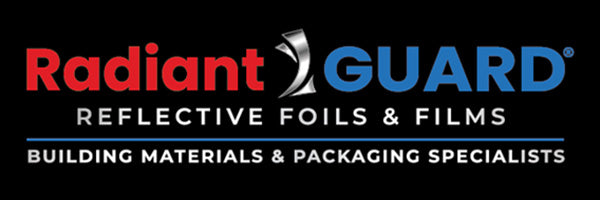 There have been some significant changes in the fire testing requirements of reflective insulation and radiant barriers which consumers need to be aware of when comparison shopping or installing in their homes or buildings. Understanding exactly what you are buying is crucial in ensuring the product you purchase will meet proper building code requirements as needed. This new fire testing method has caused some confusion in the marketplace and we believe the information below will help clarify this issues.
There have been some significant changes in the fire testing requirements of reflective insulation and radiant barriers which consumers need to be aware of when comparison shopping or installing in their homes or buildings. Understanding exactly what you are buying is crucial in ensuring the product you purchase will meet proper building code requirements as needed. This new fire testing method has caused some confusion in the marketplace and we believe the information below will help clarify this issues.
About Fire Ratings (Flame Spread & Smoke Development)
Purpose of ASTM e84
The ASTM e84 fire test method is designed to show comparative measurements of surface flame and smoke development of exposed building materials such as walls and ceilings.
All building materials are evaluated in accordance with ASTM Test Method E84 "Standard Test Method for Surface Burning Characteristics of Building Materials" to comply with building or mechanical code requirements such as the International Residential Code (IRC), International Energy Conservation Code (IECC), International Building Code, (IBC), and other major building code bodies. The purpose of this test method is to determine the relative burning behavior of the material by observing the flame spread along the specimen. As a result of this test, building materials are provided with test results regarding:
-
flame spread index - the relative rate a flame will spread over a tested surface compared with the rate of spread on an asbestos-cement board rated 0 and on red oak rated 100.
-
smoke developed index - characteristic of a material to emit smoke when exposed to flame or fire.
The flame spread index and smoke developed index values obtained by the ASTM E84 test are used by code officials and regulatory agencies (such as IRC, IECC, IBC) in the acceptance of interior finish materials for various applications. The most widely accepted classification system is described by the National Fire Protection Association as follows:
-
Class A: flame spread index 0-25; smoke developed index 0-450
-
Class B: flame spread index 26-75; smoke developed index 0-450
-
Class C: flame spread index 76-200; smoke developed index 0-450
Because radiant barrier and reflective insulation products fall into the category of building materials, they must pass ASTM fire testing methods.
New ASTM E2599 Mounting Method for E84-10 Fire Testing
It is not uncommon for ASTM to announce new testing requirements for building materials for a variety of reasons. Recent ASTM changes in the fire testing of reflective insulation and radiant barriers resulted in a new required "mounting method" (ASTM E2599) for fire testing. This new mounting method, which dictates how a radiant barrier should be laid out for the fire test, more closely resembles how reflective insulation and radiant barriers are installed in the real world.
The ASTM International Annual Book of Standards for 2010 now requires the use of the E2599 mounting method with ASTM E84-10 fire testing for reflective insulation and radiant barriers. Almost all building code organizations (such as IRC, IECC, IBC) and insurance companies refer to ASTM for fire testing methods. Now that the standard is adopted, it will be required everywhere eventually.
What This Means To Manufacturer/Suppliers
Because it's impossible for a manufacturer/supplier to know when each city, county or state begins adopting a new standard, it is in the best interest of the manufacturer to begin complying with the new standards as soon as announced by ASTM. Once a manufacturer's products comply with a new standard, they are required to re-label the products with the ASTM standard testing results for proof.
What This Means To Consumers
The consumer is advised to utilize building material products which meet current ASTM standards simply because its impossible to know when a particular ASTM standard will be required at the city/county/state level. Doing so will protect your investment for years to come.
However, just because a newer ASTM standard exists doesn't mean that an older standard is not acceptable to your city/count/state agencies or insurance provider. If you wish to use a building product that does not meet current ASTM standards, we strongly encourage you to contact your local building code officials and insurance company before making your decision.
Fire Testing Standard Applies to BOTH Retrofit & New Construction
The new ASTM fire testing standard can be required for BOTH existing retro-fit building and new building construction. For clarification on requirements, please contact your local building code officials and insurance company.



 There have been some significant changes in the fire testing requirements of reflective insulation and radiant barriers which consumers need to be aware of when comparison shopping or installing in their homes or buildings. Understanding exactly what you are buying is crucial in ensuring the product you purchase will meet proper building code requirements as needed. This new fire testing method has caused some confusion in the marketplace and we believe the information below will help clarify this issues.
There have been some significant changes in the fire testing requirements of reflective insulation and radiant barriers which consumers need to be aware of when comparison shopping or installing in their homes or buildings. Understanding exactly what you are buying is crucial in ensuring the product you purchase will meet proper building code requirements as needed. This new fire testing method has caused some confusion in the marketplace and we believe the information below will help clarify this issues.